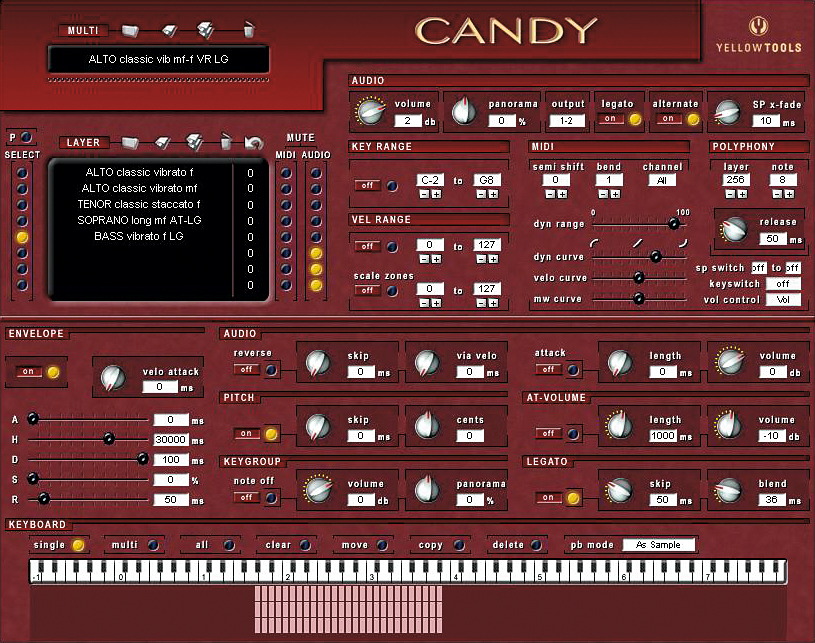MusicRadar Verdict
Thousands of samples equate to a wide range of excellent sax sounds. Plenty of control options, too.
Pros
- +
Great sounds. Good editing features. Ensembles can be easily built.
Cons
- -
Soundbank requires 9GB of space. Long loading times. Takes a while to familiarise yourself with the interface.
MusicRadar's got your back
We've seen quite a few wind instrument emulation plug-ins recently, and Candy is Yellow Tools' attempt to emulate the sound of the saxophone - something that's notoriously tricky to do.
Candy is part of Yellow Tools' Modular Virtual Instrument (MVI) range, and uses exactly the same interface as its two sister plug-ins, Culture and Majestic (reviewed in cm60 and cm76 respectively).
Its samples were developed specifically for its audio engine (and vice versa), and the hope is that this will translate into some tasty sounds. Installation of the program itself is relatively easy, though the 9GB of samples do take a while to copy to your hard drive.
A Yellow Tools USB protection key is included in the box, and this has to be activated either on the net or via email. The process is a little fiddly, but it's straightforward enough once all the necessary files are in the right place.
Sax types
There are five different types of sax to choose from - soprano, alto, tenor, baritone and bass - and each one has a ton of variations.
These can be loaded individually or as a multi containing several layers. Each layer can be edited using all of the UI's controls, which change according to the layer that's currently selected.
This is certainly a very tweakable instrument. The top section of the control surface deals with higher level parameters.
Want all the hottest music and gear news, reviews, deals, features and more, direct to your inbox? Sign up here.
Here, a layer's volume and pan settings can be adjusted and its signal assigned to any one of eight outputs. Polyphony can also be adjusted and velocity response edited.
The lower half of the interface is described as the Pro Editor section and is where the more serious sound shaping occurs (see the Pro editing boxout for more).
Candy has more than 10,000 samples under its hood, and these can be used to produce some very high quality sax sounds.
The Alternate function ensures that the same sample is never played consecutively, and it's surprisingly easy to coax out realistic phrases.
There's a huge amount of material to choose from and, because the loading times are fairly long, auditioning it all takes quite a while. It's worth familiarising yourself with Candy's soundbank, however, as it contains some real gems.
Each instrument is played in pretty much every way possible. You'll find falls, long, short, sforzando, vibrato and FX loops.
There's a part to fit virtually every application you can think of, and if you layer them up you can create some excellent ensembles.
Candy does enable you to produce very authentic sax parts, then, but as with all instruments like this, the credibility of the sound is highly dependent on a sympathetic keyboard performance.
Candy's performance-centric editing parameters certainly give it an advantage on this score. There's stiff competition for your money when it comes to virtual saxes, but Candy is certainly one of the most flexible and realistic.
Computer Music magazine is the world’s best selling publication dedicated solely to making great music with your Mac or PC computer. Each issue it brings its lucky readers the best in cutting-edge tutorials, need-to-know, expert software reviews and even all the tools you actually need to make great music today, courtesy of our legendary CM Plugin Suite.

